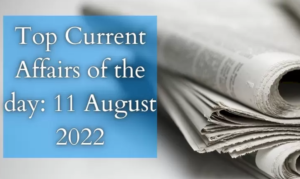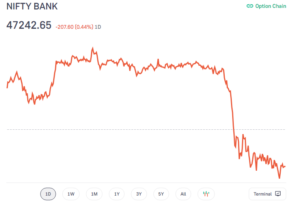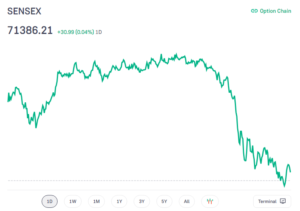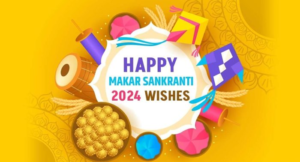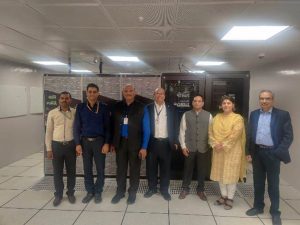
IPL Winners List 2022 & Runner-Up List (2008 to 2021) Check Now
IPL Winners List 2022
The Indian Premier League is one of the largest cricket game events which are organized annually in India. IPL (Indian Premier League) was founded in 2007 by the BCCI committee. The chairman of the Indian Premier League was Lalit Modi. 2007-2008 was the launching season for the Indian Premier League.
This year for IPL 2022, the teams for playoffs are Gujarat Titans, Lucknow super Giants, Rajasthan Royals, and Royal challengers Bangalore. Gujarat Titans are leading the IPL 2022 with 20 points. They have played 14 matches and won 10 out of 14, leading them to become the first team of 2022 to qualify for the playoffs. Rajasthan Royals and Lucknow Super Giants are on the same score of 18 points and Royal Challengers Bangalore is on 16 points. The qualifier will be held on 24th May 2022. The fans have high expectations from their favorite teams.
Here, we present the list of IPL winners in the table which includes Year, winner, runner-up, and venue.
IPL Winners & Runners List (2008 to 2021):
| Year | Winner | Runner up | Venue |
| 2008 | Rajasthan Royals | Chennai Super Kings | Mumbai |
| 2009 | Deccan Chargers | Royal Challengers Bangalore | Johannesburg |
| 2010 | Chennai Super Kings | Mumbai Indians | Mumbai |
| 2011 | Chennai Super Kings | Royal Challengers Bangalore | Chennai |
| 2012 | Kolkata Knight Riders | Chennai Super Kings | Chennai |
| 2013 | Mumbai Indians | Chennai Super Kings | Kolkata |
| 2014 | Kolkata Knight Riders | Kings XI Punjab | Bangalore |
| 2015 | Mumbai Indians | Chennai Super Kings | Kolkata |
| 2016 | Sunrisers Hyderabad | Royal Challengers Bangalore | Bangalore |
| 2017 | Mumbai Indians | Rising Pune Supergiants | Hyderabad |
| 2018 | Chennai Super Kings | Sunrisers Hyderabad | Mumbai |
| 2019 | Mumbai Indians | Chennai Super Kings | Hyderabad |
| 2020 | Mumbai Indians | Delhi Capitals | Dubai |
| 2021 | Chennai Super Kings | Kolkata Knight Riders | Dubai |
| 2022 | — | — | — |
| Year | Winner | Captain | Man of the Match | Player of the Series |
| 2008 | Rajasthan Royals | Shane Warne | Yusuf Pathan | Shane Watson |
| 2009 | Deccan Chargers | Adam Gilchrist | Anil Kumble | Adam Gilchrist |
| 2010 | Chennai Super Kings | MS Dhoni | Suresh Raina | Sachin Tendulkar |
| 2011 | Chennai Super Kings | MS Dhoni | Murali Vijay | Chris Gayle |
| 2012 | Kolkata Knight Riders | Gautam Gambhir | Manvinder Bisla | Sunil Narine |
| 2013 | Mumbai Indians | Rohit Sharma | Kieron Pollard | Shane Watson |
| 2014 | Kolkata Knight Riders | Gautam Gambhir | Manish Pandey | Glenn Maxwell |
| 2015 | Mumbai Indians | Rohit Sharma | Rohit Sharma | Andre Russell |
| 2016 | Sunrisers Hyderabad | David Warner | Ben Cutting | Virat Kohli |
| 2017 | Mumbai Indians | Rohit Sharma | Krunal Pandya | Ben Stokes |
| 2018 | Chennai Super Kings | MS Dhoni | Shane Watson | Sunil Narine |
| 2019 | Mumbai Indians | Rohit Sharma | Jasprit Bumrah | Andre Russell |
| 2020 | Mumbai Indians | Rohit Sharma | Trent Boult | Jofra Archer |
| 2021 | Chennai Super Kings | MS Dhoni | Faf du Plessis | Harshal Patel |
IPL: Teams and Maximum Trophy winners
| IPL Team | IPL Trophy | IPL Winner |
| Mumbai Indians | 5 times | 2013, 2015, 2017, 2019, 2020 |
| Chennai Super Kings | 4 times | 2010, 2011, 2018, 2021 |
| Kolkata Knight Riders | 2 times | 2012, 2014 |
| Sunrisers Hyderabad | 1 time | 2016 |
| Rajasthan Royals | 1 time | 2008 |
| Deccan Chargers | 1 time | 2009 |
Frequently Asked Questions
Q1. Who has won IPL in all years?
Ans. IPL is being played from. In 2008, it was won by Rajasthan Royals, then in 2009 by Decaan Chargers, CSK won it in 2010 and 2011, then KKR in 2012, Mumbai Indians in 2013, KKR again in 2014, Mumbai Indians again in 2015, Sunrisers Hyderabad in 2016, Mumbai Indians again in 2017, CSK in 2018, Mumbai in 2019 and 2020, and finally defending champions CSK in 2021.
Q2.How many times teams have won IPL?
Ans. Mumbai Indians have won it 5 times, CSK has won it 4 times, KKR 2 times, SRH once and Deccan Chargers and Rajasthan Royals once.
Q3.Who won most IPL?
Ans. Mumbai Indians led by Rohit Sharma have won the IPL titles 5 times, the most by any IPL franchise.
Q4.Who is the winner of the first edition of IPL?
Ans. The First edition of IPL was held in 2008 and was won by Rajasthan Royals.
Indian Air Force (IAF): IAF ranks third on World Air Power Index
Indian Air Force Ranks Third on WDMMA
The Indian Air Force (IAF) ranks third on World Air Power Index in terms of Fighting strength of different air force services of different countries. In 2022, the world directory of modern military Aircraft (WDMMA) published the Global Air Power Rankings. In this report, the Indian Air Force is placed in third place, above the Chinese Air force, or People’s Libertarian Army Air Force(PLAAF), the French Air and Space Power, and the Israeli Aviation Based Armed Forces.
About Indian Air Force
The Indian Air Force was established on 8th October 1932. On 1st April 1933, the first ac flight came into being with six RAF-Trained officers and 19 Havai Sepoys (air-soldiers). Some of the major operations executed by IAF are operation Vijay, Operation Meghdoot, operation cactus, and operation Poomalai. IAF has been involved in four major wars with Pakistan since 1950. The Mission of the IAF is defined under the Armed Forces act of 1947, the constitution of India, and The Air Force act of 1950.
The president of India holds the rank of Supreme Commander of IAF, in India, and President Ram Nath Kovind holds the rank of Supreme Commander. Indian Air Force, take the responsibility to safeguard Indian Airspace. It provides India, with rapid response evacuation, search and rescue (SAR) operations, and supply of relief in affected areas via cargo aircraft, with highly trained pilots and crews. Some relief operations executed by IAF are during natural calamities such as The Gujarat Cyclone, 1998, 2004 Tsunami, floods in North India in 2013, and Operation Rainbow in Sri Lanka.
World Directory of Modern Military Aircraft or WDMMA
World Directory of Modern Military Aircraft or WDMMA, tracks around 98 countries with 124 air services and a total of 47,840 aircraft. It ranks various modern military services all around the world and it ranks the air services based on various parameters and reports about their current Strength and limitations. WDMMA works on the report to give the citizens a complete framework on how warfare in their country is working and how these air forces are controlling and protecting them from the skies. WDMMA uses the ‘TrueValueRating’ formula or TVR formula, which helps them to separate the air forces based on overall strength and some important elements like modernization, assault, guard abilities, calculating help, and some other factors. The WDMMA, analysis the air force of a country, not only by the number of aircraft but also by their quality and strength. Of all the countries, the United States Air Force (USAF), ranks number one in the whole world, with a TVR score of 242.9. The second position is held by Russia with a TVR score of 114.2 and the third position is held by Indian Air Force with a TVR score of 69.4. According to the WDMMA report, India has 1,645 active aircraft.
FAQs on Indian Air Force
1. What is the rank of IAF in the world?
Ans. Indian Air Force has ranked third in the world according to the reports of WDMMA.
2. Which is the no. 1 Air Force in the world?
Ans. The United States Air Force (USAF), is the no. 1 Air Force in the world according to the reports of WDMMA.
3. How strong is Indian Air Force?
Ans. The Indian Air Force has ranked third in the world with 1,645 active aircraft. There is 1,70,576 active personnel in IAF. It is a tough competition for various Air Forces in the world.
4. What are the airmen ranks of the IAF?
Ans. The airmen ranks of IAF are Master Warrant Officer, Warrant Officer, Junior Warrant Officer, Sergeant, Corporal, Leading Air Craftsman, and Air Craftsman.
International Missing Children’s Day 2022
International Missing Children’s Day 2022
International Missing Children’s Day is an awareness event that is observed every year on 25th of May. The aims of the day are to place a spotlight on the issue of child abduction, educate parents on safeguarding measures to protect their children and also honour those who have never been found and celebrate those who have. This awareness event is run in conjunction with the Global Missing Children’s Network. The network, which was formed in 1998, has 23 member countries who all connect in order to share information and best practice, working towards improving the effectiveness and success rate of missing children investigations.
History of the Missing Children’s Day:
Missing Children’s Day began as an observance in the USA in 1983. The date was chosen following the disappearance of 6-year-old Etan Patz on 25th May 1979 from New York City. International Missing Children’s Day which observes the same date was launched a number of years later in 2001 and is now observed all over the world.
Ministry Of Education Releases National Achievement Survey Report (NAS) 2021
The National Achievement Survey (NAS) report for the 2021 edition has been released. NAS2021: One of the largest surveys in the world, the National Achievement Survey (NAS) 2021 was conducted on 12.11.2021 across the country, to identify the learning gaps & to take remedial measures. The NAS 2021 report cards for the national, state and district levels have been made available at the official website “nas.gov.in.”
Key points of the report:
- NAS 2021 conducted on November 12 last year assessed over 34 lakh students in 1.18 lakh schools at 720 districts across 36 states and Union Territories.
- NAS assesses the health of the school education system in the country by conducting a comprehensive evaluation survey of children’s learning competencies at Classes 3, 5, 8 and 10 with a cycle period of three years. It reflects the overall assessment of the school education system. The last NAS was held in 2017.
- NAS 2021 covered both central and state government schools, government-aided schools and private schools across the country.
- The survey was conducted in 22 languages in Language, Mathematics and EVS for Class 3 and 5; Language, Mathematics, Science and Social Science for Class 8 and Language, Mathematics, Science, Social Science and English for Class 10.
- The report is based on the performance in all subjects through disaggregation by gender (female, male), Area (Rural and Urban), Management of schools (Government, Government aided and Private unaided) and Social Groups (Schedule Caste (SC), Schedule Tribe (ST), Other Backward Communities (OBC) and General.
The objective of the report:
The objective of NAS 2021 is to evaluate children’s progress and learning competencies as an indicator of the efficiency of the education system, so as to take appropriate steps for remedial actions at different levels. It will help to unravel the gaps in learning and will support state/UT governments in developing long term, mid-term and short-term interventions to improve learning levels and orient on differential planning based on NAS 2021 data.
Centre launches Swachh Survekshan 2023
Swachh Survekshan 2023
Union Government of India has launched the Eighth Edition of Swachh Survekshan – SS-2023 under Swachh Bharat Mission Urban 2.0. Secretary, Ministry of Housing and Urban Affairs Manoj Joshi launched it at a virtual event in New Delhi. Designed with the theme of ‘Waste to Wealth’ as its driving philosophy, Swachh Survekshan- 2023 is curated towards achieving circularity in waste management. The survey would give priority to the principle of 3 Rs- Reduce, Recycle and Reuse.
About the Swachh Survekshan
The Swachh Survekshan has developed into an inspiration tool, rather than being just an assessment tool. This largest survey undertaken anywhere has brought about substantive changes at the ground level, with cities performing well and having a sense of pride. Swachh Survekshan has emerged as the largest Urban sanitation survey in the world. It was observed that whenever the Swachh Survey starts, there is an enhanced level of activities undertaken by the cities and cities are visibly cleaner during the months the survey is conducted. Therefore, in SS-2023, the evaluation will be conducted in four phases, instead of three phases in earlier editions.
Dr Tedros Ghebreyesus re-elected as Director-General of World Health Organization
World Health Organization has re-appointed Tedros Adhanom Ghebreyesus as Director-General of WHO for the second term with effect from 16th August 2022. His re-election was confirmed during the 75th World Health Assembly in Geneva. He was the sole candidate. Dr Tedros was first elected in 2017. Before joining the WHO, Dr Tedros was served as Minister of Foreign Affairs and as Minister of Health in Ethiopia.
The vote by secret ballot, announced by Ahmed Robleh Abdilleh from Djibouti at a major annual meeting, was seen as a formality since Tedros was the only candidate running. Ministers and delegates took turns to shake hands and hugging Tedros, a former health minister from Ethiopia, who has steered the UN agency through a turbulent period dominated by the COVID-19 pandemic.
Important takeaways for all competitive exams:
- World Health Organization Headquarters: Geneva, Switzerland;
- World Health Organization Founded: 7 April 1948.
Rajesh Bhushan appointed as chairperson of Committee B at the 75th World Health Assembly
Union Health Secretary, Rajesh Bhushan has been appointed as the chairperson of the Committee B at the 75th World Health Assembly (WHA). Committee B primarily discusses administrative and financial matters of the World Health Organization (WHO). Each year, the World Health Assembly has a long and complex list of health challenges and responses to review and the Assembly functions through two committees — A and B.
About Committee A:
Committee A meets to debate technical and health matters. It has listed critical issues to discuss during the 75th WHA including pandemic preparedness and response, amendment in International Health Regulations 2005, WHO work in a health emergency, Global Strategy for HIV, TB, Viral hepatitis and eradication of polio, Immunisation agenda 2030, Infection prevention and control and human resources for health etc.
About Committee B:
Committee B will discuss and prepare a report on many important issues which includes health conditions in the occupied Palestinian territory including East Jerusalem and the occupied Syrian Golan, the budget for WHO for the year 2022-23, prevention of sexual exploitation, WHO reforms Global strategy and plan of action on public health, innovation and intellectual property, audit report of WHO, Global strategy and plan of action on public health, innovation and intellectual property and intergovernmental organizations issues.
A Gopalakrishnan won VASVIK industrial research award 2020
VASVIK Industrial Research Award
A Gopalakrishnan, Director of the ICAR-Central Marine Fisheries Research Institute has won the VASVIK (Vividhlaxi Audyogik Samshodhan Vikas Kendra) Industrial Research Award for the year 2020 in the category of Agricultural Sciences and Technology. The award, which carries a cash prize of Rs 1.51 lakh and citation, is in recognition of his significant contribution towards the research works related to fish genetics. The research works related to fish genetics which is relevant for conserving many commercially important and endangered species.
About the VASVIK research award:
The VASVIK research award is presented to scientists and researchers who have excelled in various fields including agricultural sciences. His research works include the Genetic Stock Identification (GSI), species inventory, taxonomy, breeding and seed production of threatened and commercially important species for mariculture which has helped in improving scientific knowledge on Indian fishery and the conservative measures.
Why this award is given to Dr Gopalakrishnan?
The award committee observed that Dr Gopalakrishnan’s genetic studies conducted and the technologies developed have served to produce molecular markers for many endangered fishes which is crucial for biodiversity conservation. Broodstock’s development techniques and mariculture technologies formulated and standardised by him have helped in the economic upliftment of the society by providing alternate livelihoods.
MeitY hosts Digital India BHASHINI brainstorming session
Shri Rajeev Chandrasekhar, Minister of State for Electronics and Information Technology, Skill Development & Entrepreneurship, was present during a brainstorming session organised by MeiTY on Mission Digital India BHASHINI – the National Language Translation Mission (NLTM). According to him, Startups are an essential component of our digital ecosystem, and Mission Digital India Bhashini will support them in developing India-specific and Indian Languages enabled IT solutions.
KEY POINTS:
- MSMEs, Startups, and Individual Innovators will have access to Artificial Intelligence (AI) and Natural Language Processing (NLP) resources through the Bhashini Platform.
- The goal of this mission is to empower Indian citizens by linking them to the country’s digital initiatives in their local language, resulting in digital inclusion. Bhashini is an interoperable platform that will catalyse the entire Digital Ecosystem. Realizing the goal of Digital Government is a huge step forward.
- The mission will create and cultivate an ecosystem that will bring together central and state government agencies, as well as start-ups, to develop and implement new products and services in Indian languages.
- A brainstorming conference was organised via video conferencing to encourage startup involvement. The conference drew a number of notable entrepreneurs working in the Indian language space.
- Mission Digital India Bhashini also aspires to significantly enhance material in Indian languages on the Internet in areas of public interest, such as governance and policy, science and technology, and so on, encouraging Indians to use the Internet in their own language.
Multilingualism provides a significant potential for businesses to build novel solutions and products that can serve all Indian citizens, regardless of their native language. To fulfil the aims of Digital India, enabling access to knowledge resources and digital empowerment of citizens is a top priority. The Hon’ble Minister of State expressed his desire to digitally link all Indians and encourage their digital inclusion through the use of AI/NLP to overcome linguistic hurdles on the Internet.
Important Takeaways For All Competitive Exams:
- Minister of State for Electronics and Information Technology, Skill Development & Entrepreneurship: Shri Rajeev Chandrasekhar
First-ever national conference of female legislators to be inaugurated by President
At the Legislative Assembly complex, President Ram Nath Kovind will kick off the two-day National Women Legislators’ Conference-2022, which is expected to draw a large number of female parliamentarians and legislators from throughout the country. The first-ever such event, hosted by the state Assembly, is part of the nation-wide celebrations scheduled under the Azadi Ka Amrit Mahotsav‘ honouring India’s 75th anniversary of independence.
KEY POINTS:
- According to Assembly sources, the two-day conference will focus on modern issues such as women’s rights, gender equality, and enough female representation in decision-making bodies.
- Speakers in the session Constitution and Women’s Rights include Gujarat Assembly Speaker Nimaben Acharya, Lok Sabha MP Kanimozhi, former Lok Sabha Speaker Meira Kumar, and former Rajya Sabha member Brinda Karat.
- The panellists for the session “Role of Women in India’s Freedom Struggle” will be MPs Supriya Sule and Jebi Methar, as well as former MP Subhashini Ali, while the speakers for the session Women’s Rights and Legal Gaps will be West Bengal minister Shashi Panja, MP Jaya Bachchan, Delhi Assembly deputy speaker Rakhi Birla, and Kerala High Court justice Anu Sivaraman.
- In the last day session, “Under Representation of Women in Decision Making Bodies,” Uttarakhand Assembly Speaker Ritu Khanduri, Telangana MLC Kavitha Kalvakuntla, and National Federation of India Women general secretary Annie Raja will express their perspectives.
- Lok Sabha Speaker Om Birla will open the valedictory session, which will be addressed by state Devaswom and Parliamentary Affairs Minister K Radhakrishnan.
Important Takeaways For All Competitive Exams:
- Parliamentary Affairs Minister: K Radhakrishnan
- Lok Sabha Speaker: Om Birla
- Uttarakhand Assembly Speaker: Ritu Khanduri
- Gujarat Assembly Speaker: Nimaben Acharya
- National Federation of India Women general secretary: Annie Raja
Indian Navy – Bangladesh Navy Bilateral EX Bongosagar begins
Bilateral Exercise Bongosagar
The third edition of Indian Navy (IN) – Bangladesh Navy (BN) Bilateral Exercise ‘Bongosagar’ commenced at Port Mongla, Bangladesh on 24 May 2022. The Harbour Phase of the exercise begins from 24-25 May which will be followed by a Sea Phase in the Northern Bay of Bengal from 26-27 May.
About Exercise Bongosagar:
- Exercise Bongosagar is aimed at developing a high degree of interoperability and joint operational skills through the conduct of a wide spectrum of maritime exercises and operations between the two navies.
- Indian Naval Ships Kora, an indigenously built Guided Missile Corvette, and Sumedha, an indigenously built Offshore Patrol Vessel are participating in the Exercise. Bangladesh Navy is being represented by BNS Abu Ubaidah and Ali Haider, both Guided Missile Frigates.
- The harbour phase of the exercise includes professional and social interactions, and friendly sporting fixtures, in addition to the tactical level planning discussions on the conduct of the exercises at sea. The sea phase of the exercise would facilitate ships from both the navies to participate in intensive surface warfare drills, weapon firing drills, seamanship evolutions and coordinated air operations in a tactical scenario.
Fertilizers: Types, Uses and Importance 2022
Any natural or manufactured item that is applied to soil or plant tissues to offer plant nutrients is known as a fertilizer. Liming materials and other non-nutrient soil additives are not necessarily fertilizers. Fertilizer comes in a variety of forms, both natural and man-made. Fertilization in most current agricultural practices concentrates on three basic macro nutrients: nitrogen (N), phosphorus (P), and potassium (K), with micro nutrient supplements such as rock dust added on occasion. Farmers use a range of methods to apply these fertilizers, including dry, pelletized, and liquid application processes, as well as heavy agricultural equipment and hand-tool approaches.
Types of Fertilizers
Fertilizers are categorised as straight fertilizers if they only offer a single nutrient (such as K, P, or N). Multi nutrient fertilizers also known as Complex fertilizers, include two or more nutrients, such as nitrogen and phosphorus. Fertilizers are also classed as inorganic versus organic (which is the focus of this article). Except for urea, inorganic fertilizers do not contain carbon-containing compounds. Organic fertilizers are often made up of (recycled) plant or animal debris. Because different chemical treatments are necessary for their synthesis, inorganic fertilizers are sometimes known as synthetic fertilizers.
1. Single nutrient fertilizers:
- Ammonia or its solutions are the most used nitrogen-based direct fertilizers. Also extensively used is ammonium nitrate (NH4NO3). Urea is a preferred nitrogen source because, unlike ammonia and ammonium nitrate, it is solid and non-explosive. Calcium ammonium nitrate (Ca(NO3)2 NH4.10 H2O) has just a small share of the nitrogen fertilizer market.
- Superphosphates are the most common straight phosphate fertilizers. SSP (single superphosphate) is made up of 14–18 percent P2O5 in the form of Ca(H2PO4)2, as well as phosphogypsum (CaSO4.2 H2O). TSP is normally made up of 44–48 percent P2O5 and no gypsum. Double superphosphate is a compound made composed of single and triple superphosphate. A typical superphosphate fertilizer is water soluble to the tune of 90%.
- Muriate of potash (MOP) is the most common potassium-based straight fertilizer. Muriate of potash is commonly sold as a 0-0-60 or 0-0-62 fertilizer and contains 95–99 percent KCl.
2. Multi nutrient fertilizers
These fertilizers are widely used. They are made up of two or more nutrients. There are two types of fertilizers in this category: binary and multi nutrient:
- Plants receive both nitrogen and phosphorus from major two-component fertilizers. NP fertilizers are what they’re called. Monoammonium phosphate (MAP) and diammonium phosphate (DAP) are the most used NP fertilizers (DAP). NH4H2PO4 is the active component in MAP. (NH4)2HPO4 is the active component in DAP. Water solubility is about 85% for MAP and DAP fertilisers.
- NPK fertilisers are made up of three parts: nitrogen, phosphorus, and potassium. NPK fertilisers are divided into two categories: compound and mixes. Blended NPK fertilisers are physical combinations of single nutritional components, whereas compound NPK fertilisers contain chemically bound constituents.
Uses Of Fertilizers
Following are the major uses of Fertilizers:
- Fertilizers are routinely used to grow all crops, with treatment rates varying based on the soil fertility, which is normally determined by a soil test, and the crop in question. Legumes, for example, fix nitrogen from the air and do not require nitrogen fertiliser in most cases.
- Solid and liquid fertilizers are used to fertilize crops. Approximately 90% of fertilizers are used as solids. Urea, diammonium phosphate, and potassium chloride are the most often used solid inorganic fertilizers. Granulated or powdered solid fertiliser is the most common type.
- Solids are frequently present as prills, or solid globules. Anhydrous ammonia, aqueous ammonia solutions, aqueous ammonium nitrate solutions, and urea are examples of liquid fertilisers. To make a concentrated liquid fertiliser, dilute these concentrated materials with water. Liquid fertiliser has the advantage of having a faster effect and being easier to apply.
- Urea is extremely water soluble, making it ideal for use in fertiliser solutions (in conjunction with ammonium nitrate: UAN), such as foliar feed fertilisers. Granules are chosen over prills for fertiliser application because of their narrower particle size dispersion, which is advantageous for mechanical application.
- Foliar fertilisers are applied to the leaves directly. This method is nearly always used to apply water-soluble straight nitrogen fertilisers, and it is particularly effective for high-value crops like fruits. The most frequent foliar fertiliser is urea.
Importance of Fertilizers
Fertilizers are essential for revitalising the soil by giving the nutrients that plants require to thrive. The macronutrients nitrogen, phosphorus, potassium, calcium, sulphur, magnesium, oxygen, hydrogen, and carbon, as well as the micronutrients iron, boron, chlorine, manganese, zinc, copper, molybdenum, and nickel, are all found in nature. The nutrients follow the crop when it is harvested. As a result, important nutrients are taken from the soil. When the soil is unable to replenish all of the nutrients on its own, fertilizers are used to supplement the ones that are deficient. Higher crop yields are required to keep up with the world’s growing population. To restore the soil, both organic and mineral fertilizers can be employed. Organic fertilizers have a lower nutritional content than mineral fertilizers, which are concentrated and have a tightly controlled nutrient content.
All of the nutrients found in various fertilizers can be found in nature. Nitrogen, potassium, and phosphate are the most prevalent nutrient sources in mineral fertilizers. Air is the source of nitrogen. Ammonia is made from a mixture of nitrogen from the air and hydrogen from natural gas in the most typical nitrogen fertilizer manufacturing process. Although air contains 78 percent nitrogen, plants cannot obtain the nitrogen they require straight from the air; instead, they must obtain it from the soil through their roots. Potassium comes from ancient sea and lake deposits that date back millions of years. Potassium fertilisers are made from potassium chloride, which is found in nature. This is sodium chloride, which is similar to table salt. The name ‘potash’ comes from the high potassium content of ash from burning wood or straw. Plant roots cannot naturally reach potassium sources since they are often located far below the soil surface (1-2 km depth).
FAQs
Ques. What are the 3 types of fertilizers?
Ans. Fertilizers are categorised as straight fertilizers if they only offer a single nutrient (such as K, P, or N). Multi nutrient fertilizers also known as Complex fertilizers, include two or more nutrients, such as nitrogen and phosphorus. The Big 3 primary nutrients in commercial fertilizers are nitrogen, phosphorus, and potassium, or NPK. Each of these essential elements is important for plant nutrition.
Ques. What is fertilizer and example?
Ans. Any natural or manufactured item that is applied to soil or plant tissues to offer plant nutrients is known as a fertilizer. Liming materials and other non-nutrient soil additives are not necessarily fertilizers. Manure, slurry, worm castings, peat, seaweed, and guano are examples of naturally occurring organic fertilizers. Green manure crops are also planted to supplement soil nutrients.
Ques. What are fertilizers in short answer?
Ans. Any natural or manufactured item that is applied to soil or plant tissues to offer plant nutrients is known as a fertilizer. Fertilizers are chemical substances that farmers use on a regular basis to help their crops grow and produce more. Fertilizers supply essential nutrients for plant growth.
Ques. What are the 2 types of fertilizer?
Ans. Fertilizers are also classed as inorganic versus organic (which is the focus of this article). Except for urea, inorganic fertilizers do not contain carbon-containing compounds. Inorganic and organic fertilizers are the two types of fertilizers. In the broadest sense, fertilizers are any living or inorganic substance that aids in plant growth and health.
Ques. is the most common type of fertilizer?
Ans. Urea and 16-20-0 are the most often used fertilizer grades. Urea is largely used as a nitrogen source, whereas 16-20-0 is primarily used as a phosphorus source. Instead of 16-20-0, 18-46-0 and, less typically, 14-14-14 are used in some locations. Potassium isn’t usually considered a limiting nutrient.
WEF’s Travel and Tourism Competitiveness Index 2021: India Ranks 54
The World Economic Forum’s (WEF) ranked India 54th position (down from 46th in 2019) with a score of 4.1 in its Travel and Tourism Development Index 2021, but still, India remains the top performer in South Asia. Japan has topped (1) the global chart and the bottom position (117) is occupied by the country Chad.
About the WEF’s Travel and Tourism Development Index 2021
The WEF’s Travel and Tourism Development Index 2021 is a direct evolution of the Travel & Tourism Competitiveness Index, which has been published biennially for the past 15 years. The Index assesses 117 economies, based on 5 subindexes, 17 pillars and 112 individual indicators, distributed among the different pillars.
The five Sub indexes:
- Enabling Environment
- Travel and Tourism Policy and Enabling Conditions
- Infrastructure
- Travel and Tourism Demand Drivers
- Travel and Tourism Sustainability
Countries in the Global Ranking:
| Rank | Country | Score |
| 1 | Japan | 5.2 |
| 2 | United States of America (USA) | 5.2 |
| 3 | Spain | 5.2 |
| 4 | France | 5.1 |
| 5 | Germany | 5.1 |
| 54 | India | 4.1 |
Important takeaways for all competitive exams:
- World Economic Forum (WEF) Founder and Executive Chairman: Klaus Schwab;
- World Economic Forum (WEF) Headquarters: Cologny, canton of Geneva, Switzerland;
- World Economic Forum (WEF) was Established: 1971.
Card-Less Cash Withdrawals stage across All ATMs set by RBI
All banks have been urged by the Reserve Bank of India (RBI) to offer consumers the option of Interoperable Card-less Cash Withdrawal (ICCW) at their ATMs. At their ATMs, all banks, ATM networks, and WLAOs may offer the option of ICCW. The National Payments Corporation of India (NPCI) has been advised to make Unified Payments Interface (UPI) integration with all banks and ATM networks as simple as possible. Customer authorization would be done using UPI, but settlement would be done through the National Financial Switch (NFS) / ATM networks. The on-us / off-us ICCW transactions shall be conducted without the imposition of any costs other than those set forth in the Interchange Fee and Customer Charges Circular in a notification.
KEY POINTS:
- Withdrawal limitations for ICCW transactions will be the same as those for ordinary on-site and off-site ATM withdrawals. All other instructions regarding the Harmonisation of Turn Around Time (TAT) and consumer compensation for unsuccessful transactions will remain in effect, according to the letter.
- Currently, a few banks allow cardless cash withdrawals through ATMs to its customers at their own ATMs (also known as on-us basis).
- In its monetary policy review meeting in April 2022, the RBI suggested allowing interoperability in cardless cash withdrawal transactions at all banks’ ATMs utilising the UPI function.
- Cardless cash withdrawals through ATMs are an allowed mode of transaction offered on a case-by-case basis by a few institutions in the country for their customers at their own ATMs.
The lack of a card required to commence cash withdrawal transactions would aid in the prevention of frauds like skimming, card cloning, and device tampering. To encourage card-less cash withdrawals across all banks and ATM networks/operators, it is recommended that customers be able to authorise transactions through the Unified Payments Interface (UPI), with such transactions being settled through ATM networks. Separate orders would be sent to the National Payments Corporation of India (NPCI), ATM networks, and banks “shortly,” according to Developmental and Regulatory Policies.
Bank cash withdrawals without a card
At this time, several banks provide cashless card withdrawals at their own ATMs. Cardless cash withdrawal requests can be started for a minimum of Rs.100 per transaction and up to a maximum of Rs.10,000 per day or Rs.25,000 per month for a beneficiary (The limitations are subject to change as per regulatory standards),” according to the HDFC Bank website. Customers of HDFC Bank should also be aware that a successful cardless cash withdrawal request is only valid for 24 hours after it is submitted. The request will be reversed to the account that was debited by the originator after 24 hours.
FAQs
Ques. What is a Cash Withdrawal without a Card?
Ans. A cardless cash withdrawal transaction allows the sender to transmit money without using a credit card.
Ques. What is a Cash Withdrawal without a Card?
Ans. A Cardless Cash Withdrawal transaction allows the sender to send money from an ICICI Bank account to anyone in India who has a valid mobile phone number. Without having to utilise an ATM or a Debit Card, the beneficiary can withdraw the funds from any ICICI Bank ATM.
Ques. Who may take advantage of the Cardless Cash Withdrawal service?
Ans. Any ICICI Bank Current Account customer (sender) with transaction access who is registered for Corporate Internet Banking (CIB) can use the Cardless Cash Withdrawal function. The beneficiary could be a Bank customer or not. In order to make bulk payments, the customer must have Bulk Cardless Cash Withdrawal enabled on their CIB account.
Ques. What conditions must be met in order to use a Cardless Cash Withdrawal transaction?
Ans. You must be registered with ICICI Bank Corporate Internet Banking (CIB) and have transaction access to use the Cardless Cash Withdrawal service. In order to make bulk payments, the customer must have Bulk Cardless Cash Withdrawal enabled on their CIB account. Simply visit your nearest ICICI Bank branch to register for CIB or to have further access to Bulk Cardless Cash Withdrawal.
SEBI Revoked the ICEX’s Permanent Recognition.
SEBI, the market regulator, announced that it had revoked the Indian Commodity Exchange Limited’s (ICEX) recognition. The bourse’s recognition was revoked after Sebi issued an order declaring it non-compliant on many grounds, including net worth and infrastructure criteria. As a result of the withdrawal, ICEX has been directed to transfer the funds in its Investor Protection Fund and Investor Services Fund to the Investor Protection and Education Fund of Sebi.
KEY POINTS:
- Furthermore, it has been requested to set aside adequate assets to cover any claims, clear any outstanding Sebi debts, and pay Sebi registration costs in accordance with broker standards.
- ICEX has been told not to use the term “stock exchange” or any variation of it in its or its subsidiary companies’ names.
- The federal government recognised ICEX as a forward contract exchange on a permanent basis.
Important Takeaways for All Competitive Exams:
- SEBI: Security And Exchange Board of India
- SEBI Chairperson: Madhabi Puri Buch
Ruskin Bond’s book titled ‘Listen to Your Heart: The London Adventure’ Released
A new book titled “Listen to Your Heart: The London Adventure” authored by Ruskin Bond, was published by Penguin Random House India (PRHI) on Ruskin Bond’s 88th birthday (19th May 2022). Ruskin Bond, India’s famous Children’s book author, was born in Kasauli (Himachal Pradesh) and grew up in Jamnagar (Gujarat), Dehradun (Uttarakhand), New Delhi and Shimla (Himachal Pradesh).
About the book:
His latest book, Listen to Your Heart: The London Adventure, to be released on his 88th birthday, gives readers a peek into the four years he spent in the Channel Islands and England. The fifth – and final – volume of his memoir, talks about how he muses over his loneliness, switches jobs, falls in love, befriends the ocean and relentlessly chases his big dream of becoming a famous writer.
RBI allowed trade transactions with Sri Lanka to be settled in Indian rupees
The Reserve Bank of India (RBI) has permitted trade transactions with Sri Lanka to be handled in Indian Rupees (INR), outside the Asian Clearing Union (ACU) mechanism, due to the difficulty faced by exporters in obtaining revenues from the island country. The Indian government guaranteed a term loan of $1 billion granted to Sri Lanka by the State Bank of India to finance the acquisition of vital commodities and services such as food, medicines, gasoline, and industrial raw material.
KEY POINTS:
- Financing of qualified goods and services exported from India, as defined by the agreement, would be allowed under the terms of the agreement, but only if they met certain criteria.
- As long as they are eligible for export under the Indian Foreign Trade Policy, their acquisition is agreed to be financed by SBI.
- These directives, according to the RBI, are effective immediately.
- The credit facility under the agreement can be drawn down for up to 12 months from the agreement’s signing date.
About Asian Clearing Union:
- The ACU was founded on December 9, 1974, at the request of the United Nations Economic and Social Commission for Asia and the Pacific, to promote regional cooperation.
- Its headquarters are in Tehran, Iran. The agency’s principal goal is to make payments easier.
- The agency’s principal goal is to make it easier for member countries to make multilateral payments for qualifying transactions, reducing the usage of foreign exchange reserves and transfer costs while also increasing trade among the countries involved.
First Case of monkeypox in the Gulf reported in the UAE
The United Arab Emirates (UAE) is the first Gulf country to report a monkeypox case. The Czech Republic and Slovenia became the first countries outside of Africa to disclose cases, joining 18 other countries. Although the number is projected to climb even more, experts warn the overall risk to the general public remains minimal.
KEY POINTS:
- Fever and rash are common signs, but the illness is usually minor.
- Virus outbreaks have been discovered in Europe, Australia, and the United States.
- A case has been found in a visitor who recently visited West Africa and is now undergoing medical care in the UAE, according to health officials.
- Authorities there say they are completely prepared to deal with any epidemic, and that early detection methods for the disease are in place.
- The World Health Organization has stated that the virus can be contained in nations outside of Africa if the appropriate response is taken.
About Monkeypox:
The monkeypox virus (MPV or MPXV) is a DNA virus that causes monkeypox in humans and other animals. It belongs to the family Poxviridae and the genus Orthopoxvirus. It’s a human orthopoxvirus that also includes the variola (VARV), cowpox (CPX), and vaccinia (VACV) viruses. It is neither a direct ancestor nor a direct descendant of the smallpox-causing variola virus. Smallpox is comparable to monkeypox, except it has a milder rash and a lower mortality rate.
India’s First Olympic Values Education launched in Odisha
Olympic Values Education Programme
The Olympic Values Education Programme (OVEP) of the International Olympic Committee (IOC) was launched in Odisha by Chief Minister Naveen Patnaik, in collaboration with the Abhinav Bindra Foundation Trust (ABFT). The OVEP is a practical set of resources aimed at introducing young people to the Olympic values of excellence, respect and friendship. It will be a values-based curriculum, to be implemented initially in 90 schools in Rourkela and Bhubaneswar, catering to about 32,000 children.
The state of Odisha intends to take OVEP to all its schools and higher education institutions in a phased manner, thereby enabling its young population to truly take on board the Olympic values.
About Olympic Values Education Programme (OVEP)
- It is a series of free and accessible teaching resources created by the IOC, to complement academic curricula using the context of Olympic sports and the core principles of Olympism.
- The programme aims to disseminate this values-based curriculum to help children become active, healthy and responsible citizens.
- A landmark initiative in India’s Olympic movement, the launch of OVEP comes as a build-up to the prestigious IOC 2023 Session.
Important takeaways for all competitive exams:
- International Olympic Committee Headquarters: Lausanne, Switzerland;
- International Olympic Committee Director-General: Christophe De Kepper;
- International Olympic Committee Founded: 23 June 1894, Paris, France.
SC appoints 3-member Committee to oversee the functioning of AIFF
The Supreme Court today appointed a three-member Committee of Administrators (CoA) to oversee the affairs of the All India Football Federation (AIFF) and the adoption of its constitution in accordance with the National Sports Code and model guidelines, led by former apex court judge AR Dave.
KEY POINTS:
- The COA will include two previous members — Dr SY Qureshi, former Chief Election Commissioner, and Bhaskar Ganguly, former captain of the Indian Football Team, in addition to Retired Justice Dave, according to a bench of Justices DY Chandrachud, Surya Kant, and PS Narasimha.
- The top court stated that the current state of affairs in the AIFF is not conducive to the federation’s legitimate governance. It instructed the CoA to assume control of the AIFF immediately and oversee the AIFF’s approval of the constitution.
Important Takeaways For All Competitive Exams:
- Chief Justice of Inida: N. V. Ramana
Kolkata Becomes First Metro City To Get Its Biodiversity Register
Biodiversity Register
Kolkata is the first metro city in the country to prepare a detailed register of biodiversity. Kolkata Municipal Corporation released the People’s Biodiversity Register (PBR), a document with details about the floral and faunal varieties in the city as well as its land use and human activities. The document is prepared by the biodiversity management committee (BMC) of the civic body under the supervision of the state biodiversity board and with help from NGOs. Chandigarh and Indore are other important cities which have prepared the document.
Key points of the report:
- The 520-page biodiversity register of Kolkata, a copy of which is with The Telegraph, has documented 138 species of trees, 26 types of Chinese vegetables, 33 species of medicinal plants and about 100 other plant species.
- The report also documented around 290 animal species, including about 70 species of butterflies, 47 varieties of fish, 84 varieties of birds and 22 varieties of mammals, based on the data sourced from 144 wards in the city.
- The report covers hotspots such as the East Kolkata Wetlands and Rabindra Sarobar.
Param Porul supercomputer inaugurated at NIT Tiruchirappalli
A supercomputer named Param Porul was inaugurated at NIT Tiruchirappalli under National Supercomputing Mission (NSM). The NSM is a joint initiative of the Ministry of Electronics and Information Technology (MeitY) and the Department of Science and Technology (DST). Param Porul supercomputing facility is established under phase two of the national supercomputing mission to facilitate computational research.
About the Param Porul:
- The Param Porul is based on direct contact liquid cooling technology to obtain high-power usage effectiveness and thereby reducing the operational cost. Multiple applications from various scientific domains such as Weather and Climate, Bioinformatics, Computational Chemistry, Molecular Dynamics, Material Sciences, Computational Fluid Dynamics etc. have been installed on the system for the benefit of researchers.
- The system is equipped with a mix of CPU nodes, GPU nodes, high memory nodes, high throughput storage and high-performance Infiniband interconnect to cater for the computing needs of various scientific and engineering applications.

